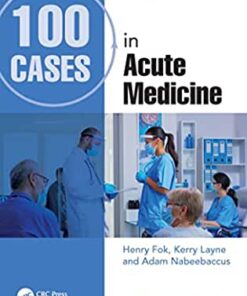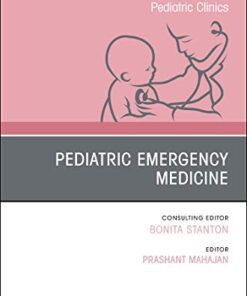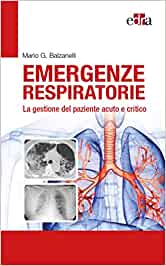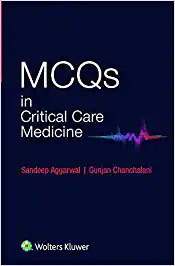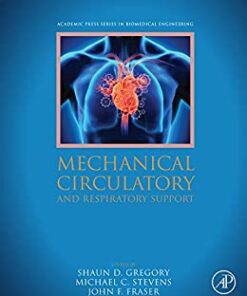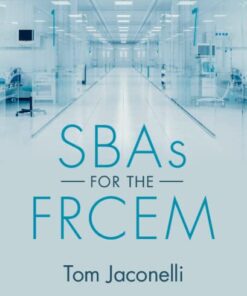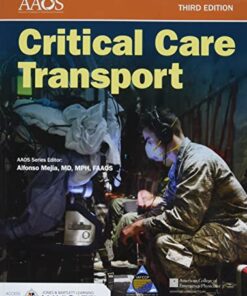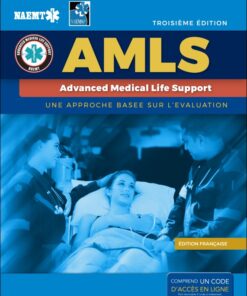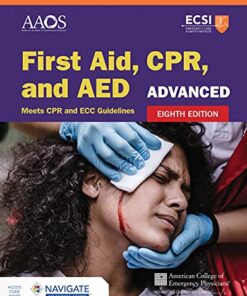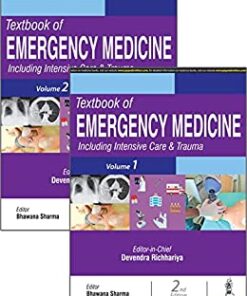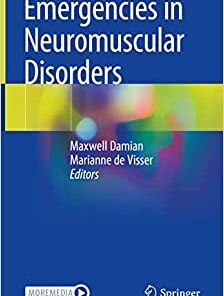Discover the Best Emergency Medicine Books Now!
Are you looking for the best emergency medicine books to help you stay up-to-date on the latest medical advances? Look no further than DentalBooks.net! Our selection of emergency medicine books is comprehensive and includes titles from leading authors in the field. Whether you’re a student, practitioner, or researcher, you’ll find the perfect book to meet your needs. From textbooks to reference guides, we have something for everyone. Plus, our prices are unbeatable and our customer service is top-notch. So don’t wait any longer – discover the best emergency medicine books now at DentalBooks.net!
EMERGENCY MEDICINE BOOKS
Emergências Neurocirúrgicas, 3rd Edition (Original PDF from Publisher)
EMERGENCY MEDICINE BOOKS
Point of Care Ultrasound in Critical Care (ePub+Converted PDF)
EMERGENCY MEDICINE BOOKS
Receituário de Bolso: Emergências Médicas, 1st edition (Original PDF from Publisher)
EMERGENCY MEDICINE BOOKS
AMLS: Advanced Medical Life Support, 3rd edition (Original PDF from Publisher)
EMERGENCY MEDICINE BOOKS
EMERGENCY MEDICINE BOOKS
EMERGENCY MEDICINE BOOKS
100 Cases in Acute Medicine, 2nd Edition (Original PDF from Publisher)
EMERGENCY MEDICINE BOOKS
Emergenze respiratorie. La gestione del paziente acuto e critico (EPUB3)
EMERGENCY MEDICINE BOOKS
EMERGENCY MEDICINE BOOKS
EMERGENCY MEDICINE BOOKS
Need-to-Know Emergency Medicine: A Review for Physicians in a Hurry 2022 (CME VIDEOS)
EMERGENCY MEDICINE BOOKS
EMERGENCY MEDICINE BOOKS
The Walls Manual of Emergency Airway Management, 6th Edition (EPUB3)
EMERGENCY MEDICINE BOOKS
The Washington Manual of Emergency Medicine, SAE (Original PDF from Publisher)
EMERGENCY MEDICINE BOOKS
MCQS in Critical Care Medicine (Original PDF from Publisher)
EMERGENCY MEDICINE BOOKS
Mechanical Circulatory and Respiratory Support (Original PDF from Publisher)
EMERGENCY MEDICINE BOOKS
EMERGENCY MEDICINE BOOKS
EMERGENCY MEDICINE BOOKS
EMERGENCY MEDICINE BOOKS
Critical Care Transport, 3rd Edition (Original PDF from Publisher)
EMERGENCY MEDICINE BOOKS
Evolution of EMS: COVID-19 Guidance for EMS Providers (Original PDF from Publisher)
EMERGENCY MEDICINE BOOKS
Emergency Pediatric Care Course Manual, 4th Edition (Original PDF from Publisher)
EMERGENCY MEDICINE BOOKS
French AMLS: Support Avance De Vie Medicale, 3e Édition (Original PDF from Publisher)
EMERGENCY MEDICINE BOOKS
Advanced First Aid, CPR, and AED, 8th Edition (Original PDF from Publisher)
EMERGENCY MEDICINE BOOKS
Standard First Aid, CPR, and AED, 8th Edition (Original PDF from Publisher)
EMERGENCY MEDICINE BOOKS
EMERGENCY MEDICINE BOOKS
Emergencies in Neuromuscular Disorders (Original PDF from Publisher)
EMERGENCY MEDICINE BOOKS
EMERGENCY MEDICINE BOOKS
Introduction
Emergency Medicine Books provide essential information for medical professionals who are responsible for providing emergency care. These books cover a wide range of topics, from basic first aid to advanced life-saving techniques. They provide detailed descriptions of the signs and symptoms of various medical conditions, as well as the appropriate treatments and medications. Emergency Medicine Books also offer guidance on how to respond to different types of emergencies, such as natural disasters, mass casualty incidents, and terrorist attacks. With their comprehensive coverage, these books are an invaluable resource for any medical professional working in the field of emergency medicine.
Overview of Emergency Medicine Books: A Guide to Selecting the Right Textbook for Your Needs
Commonly Used Diagnostic Tests and Procedures in Emergency Medicine
Emergency medicine is a field of medicine that focuses on the diagnosis and treatment of acute illnesses and injuries. Emergency physicians are trained to quickly assess and diagnose patients in order to provide timely and effective care. As such, they rely heavily on diagnostic tests and procedures to help them make accurate diagnoses and determine the best course of treatment.
One of the most commonly used diagnostic tests in emergency medicine is imaging. This includes X-rays, CT scans, MRIs, and ultrasounds. These tests allow doctors to see inside the body and identify any abnormalities or injuries. X-rays are often used to diagnose broken bones, while CT scans can be used to detect internal bleeding or organ damage. MRIs and ultrasounds are used to look at soft tissues, such as muscles, tendons, and ligaments.
Blood tests are also commonly used in emergency medicine. These tests can help diagnose infections, measure electrolyte levels, and check for signs of anemia or other blood disorders. Blood tests can also be used to detect the presence of drugs or alcohol in the system.
Other common diagnostic tests include electrocardiograms (ECGs) and echocardiograms. ECGs measure the electrical activity of the heart and can be used to diagnose heart rhythm problems or blockages in the coronary arteries. Echocardiograms use sound waves to create images of the heart and can be used to diagnose heart valve problems or congenital heart defects.
In addition to diagnostic tests, emergency physicians may also perform certain procedures. Intubation is one of the most common procedures performed in the emergency room. This involves inserting a tube into the patient’s airway to help them breathe. Other common procedures include lumbar punctures, which involve inserting a needle into the lower back to collect cerebrospinal fluid; and thoracentesis, which involves inserting a needle into the chest cavity to remove fluid from around the lungs.
Diagnostic tests and procedures are essential tools for emergency physicians. They allow doctors to quickly and accurately diagnose and treat patients in order to provide the best possible care.
The Role of Imaging in Emergency Medicine
Imaging plays an essential role in emergency medicine, as it is used to diagnose and treat a wide range of medical conditions. Imaging techniques such as X-rays, CT scans, ultrasounds, and MRIs are used to detect and diagnose injuries and illnesses quickly and accurately. These imaging techniques provide physicians with detailed images of the body’s internal structures, allowing them to make informed decisions about treatment.
X-rays are one of the most commonly used imaging techniques in emergency medicine. X-rays use radiation to create images of the body’s internal structures, including bones, organs, and soft tissues. X-rays can be used to diagnose broken bones, fractures, and other musculoskeletal injuries. They can also be used to detect foreign objects, such as bullets or shrapnel, that may have become lodged in the body.
CT scans are another type of imaging technique used in emergency medicine. CT scans use X-ray technology to create detailed cross-sectional images of the body. CT scans can be used to diagnose a variety of medical conditions, including head injuries, abdominal pain, and chest pain. CT scans can also be used to detect tumors, blood clots, and other abnormalities.
Ultrasound is a non-invasive imaging technique that uses sound waves to create images of the body’s internal structures. Ultrasound is often used to diagnose abdominal pain, gallstones, and other abdominal conditions. It can also be used to detect fetal abnormalities during pregnancy.
MRI is a powerful imaging technique that uses magnetic fields and radio waves to create detailed images of the body’s internal structures. MRI is often used to diagnose brain and spinal cord injuries, as well as tumors and other abnormalities.
Imaging plays an important role in emergency medicine, as it allows physicians to quickly and accurately diagnose and treat a wide range of medical conditions. By using imaging techniques such as X-rays, CT scans, ultrasounds, and MRIs, physicians can make informed decisions about treatment and provide patients with the best possible care.
Clinical Guidelines for Emergency Care
Clinical guidelines for emergency care are a set of standards and protocols that healthcare professionals use to provide the best possible care for patients in an emergency situation. These guidelines are designed to ensure that all patients receive the same level of care regardless of their location or the severity of their condition.
The guidelines cover a wide range of topics, including diagnosis and treatment, patient safety, communication, and documentation. They also provide guidance on how to respond to different types of emergencies, such as cardiac arrest, stroke, trauma, and poisoning. The guidelines are based on evidence-based medicine and are regularly updated to reflect changes in medical practice.
The guidelines are developed by a team of experts from various disciplines, including physicians, nurses, paramedics, and other healthcare professionals. The team reviews the latest research and evidence to develop the guidelines. The guidelines are then reviewed and approved by a panel of experts before they are released.
The guidelines are intended to be used by healthcare professionals in the field, but they can also be used by patients and their families to understand what to expect during an emergency. They can help patients make informed decisions about their care and provide them with information about the risks and benefits of different treatments.
Clinical guidelines for emergency care are an important part of providing quality care to patients in an emergency situation. They provide healthcare professionals with the tools they need to provide the best possible care for their patients.
Evidence-Based Practices in Emergency Medicine
Evidence-Based Practices in Emergency Medicine (EBPM) is a set of medical practices that are based on the best available evidence from clinical research. EBPM is an important part of modern emergency medicine, as it helps to ensure that patients receive the most effective and safe treatments possible.
The goal of EBPM is to provide the highest quality of care for patients in the emergency department. This is achieved by using the best available evidence from clinical research to inform decisions about diagnosis, treatment, and management of patients. EBPM also seeks to reduce unnecessary tests and procedures, which can lead to improved patient outcomes and cost savings.
EBPM involves the use of evidence-based guidelines, protocols, and algorithms to guide decision-making. These guidelines are developed by experts in the field and are based on the latest research findings. They are designed to help clinicians make the best decisions for their patients.
In addition to providing guidance for clinicians, EBPM also encourages the use of shared decision-making between clinicians and patients. This allows patients to be involved in their own care and to make informed decisions about their health.
EBPM is an important part of modern emergency medicine, as it helps to ensure that patients receive the most effective and safe treatments possible. By using the best available evidence from clinical research, clinicians can make more informed decisions and provide better care for their patients.
Conclusion
Emergency Medicine Books are an invaluable resource for medical professionals, providing comprehensive information on the diagnosis and treatment of a wide range of medical conditions. They provide detailed guidance on how to respond to emergency situations, as well as advice on how to prevent them from occurring in the first place. With their help, medical professionals can ensure that they are prepared to handle any medical emergency that may arise. Emergency Medicine Books are essential for any medical professional looking to stay up-to-date with the latest developments in the field.







